Arizona is often associated with iconic landmarks such as the Grand Canyon and Monument Valley. Yet the state also holds many lesser-known desert destinations that showcase its geology, ecology, and cultural history. Some are managed as national monuments or wildlife refuges, while others preserve historic sites or ghost towns. These areas are generally less crowded than major attractions, offering opportunities for quieter exploration.
Because many of these places are remote and minimally developed, visitors should plan ahead, checking permit requirements, carrying sufficient water, and preparing for desert conditions. This guide outlines several of Arizona’s hidden desert landscapes, with details on location, features, and practical notes for exploring them responsibly.
1. Chiricahua National Monument
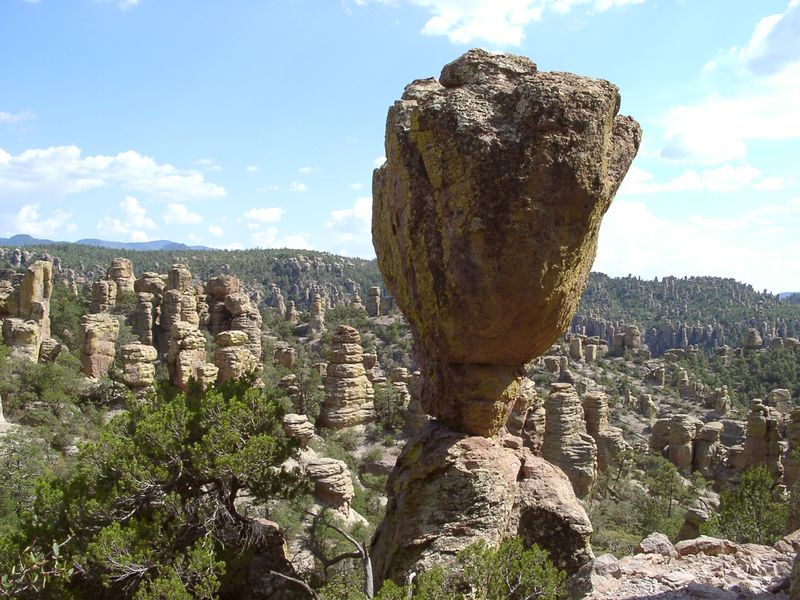
Curiosity often leads hikers to the labyrinth of stone at Chiricahua National Monument, where unusual pinnacles and balancing rocks have stood for millennia. The monument’s “sky island” ecosystem provides refuge for an impressive range of plant and animal species.
While summer monsoons bring a hush to its valleys, spring and fall reveal lively colors and accessible trails. Some areas are only reached by longer treks, rewarding those who seek quiet with sweeping vistas over sculpted geology.
Interpretive signs at key points share the story of the Apache people and the region’s volcanic past. Limited shuttle service and designated campsites make planning ahead advisable, but the remoteness ensures that even on busy days, the monument remains tranquil and uncrowded.
2. Kofa National Wildlife Refuge
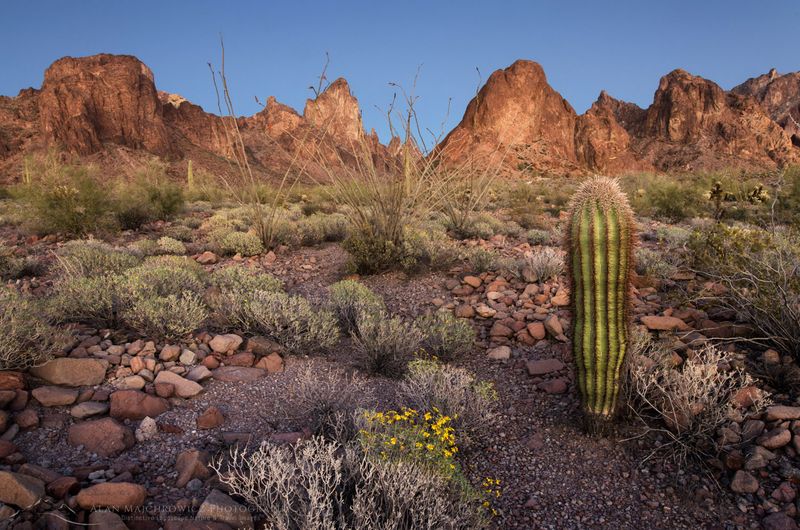
Stepping into Kofa National Wildlife Refuge can feel like entering another era. Miles of unpaved roads wind through undisturbed saguaro forests, where desert bighorn sheep quietly graze.
This vast preserve, situated between Yuma and Quartzsite, is one of the few places where Arizona’s wild solitude remains nearly untouched by modern development. Opportunities for wildlife viewing are best in the cooler months, especially at dawn.
Facilities are minimal, so visitors should bring all essentials, including water and navigation tools. Venturing deeper into the Kofa mountains, explorers may find remnants of mining activity or spot blooming ocotillos in spring. The refuge’s raw landscape attracts those seeking genuine desert experiences.
3. Sonoran Desert National Monument
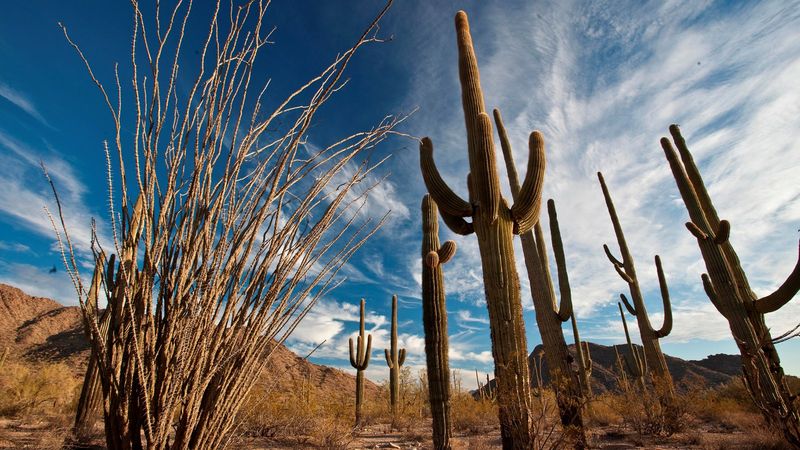
Amid the Sonoran Desert’s nearly 500,000 protected acres, an unexpected diversity flourishes. South of Phoenix, the monument preserves some of North America’s richest desert plant communities, including rare cacti and wildflowers.
Despite its scale, human impact is minimal; paved roads and facilities are sparse, increasing the sense of remoteness. Birds such as the Gila woodpecker and desert tortoise thrive among the saguaros.
Visitors looking for solitude will find few crowd-drawing amenities here, but those prepared for basic conditions can enjoy extensive hiking, birdwatching, and stargazing. The monument’s understated terrain rewards patient observation and a willingness to travel off the main highways.
4. Aravaipa Canyon Wilderness
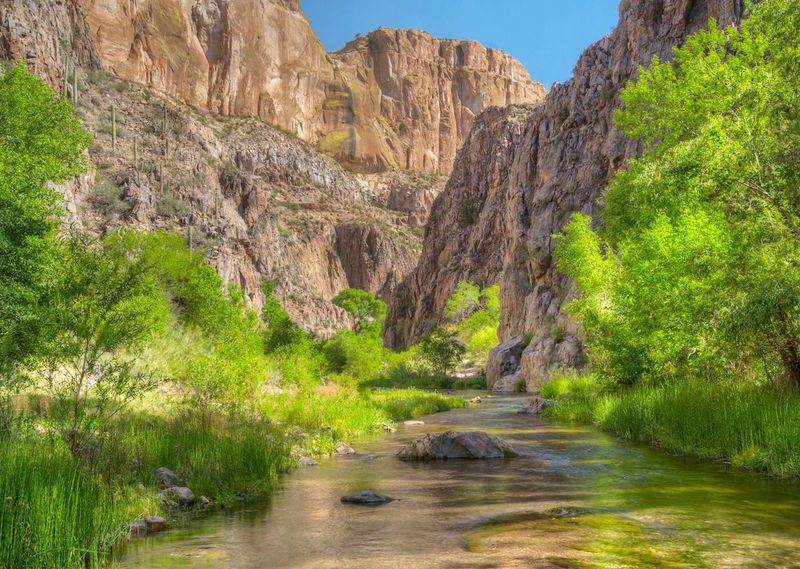
Early morning sunlight filters through Aravaipa Canyon’s vertical walls, casting reflections on the permanent stream below. The canyon’s perennial waters create a rare riparian oasis amid surrounding desert scrub.
Entry is strictly regulated, with daily permits limiting visitor numbers and helping protect native fish, birds, and fragile habitats. Trails are often unmarked, requiring navigation along the watercourse itself.
Those who make the trek may spot coatimundis or rare raptors overhead. Minimal infrastructure emphasizes preservation, so hikers need to pack out all belongings. The wilderness character is evident in the silence and the lushness found within the canyon’s narrow embrace.
5. Painted Rock Petroglyph Site
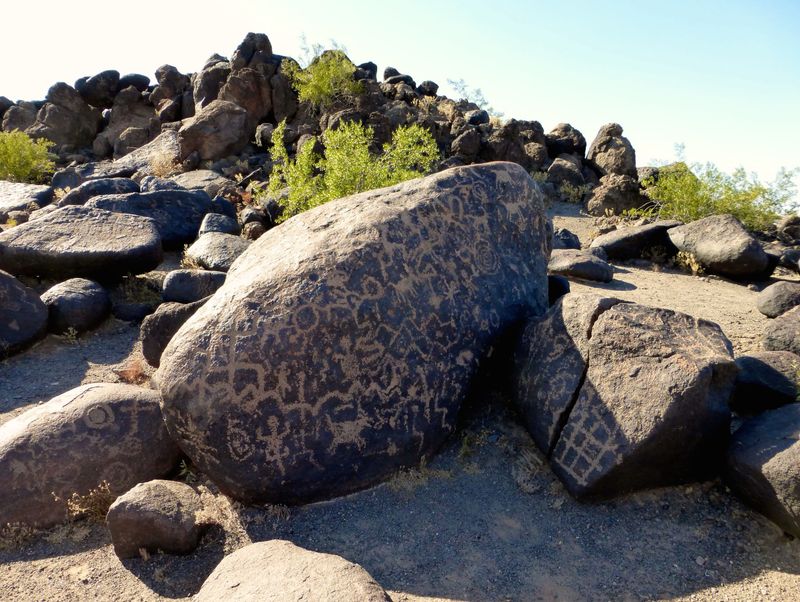
At Painted Rock Petroglyph Site, sun-bleached stones are inscribed with stories from centuries past. Thousands of glyphs cover basalt boulders, each symbol etched by Indigenous peoples over generations.
The site sits near Gila Bend, surrounded by open desert and accessible via a short road off the highway. A simple campground nearby allows for overnight stays, though visitors will find only basic amenities.
Interpretive displays provide context for the site’s history, and respectful exploration is encouraged. The surrounding landscape remains quiet, making it easy to imagine life here when the petroglyphs were first created.
6. Cabeza Prieta National Wildlife Refuge
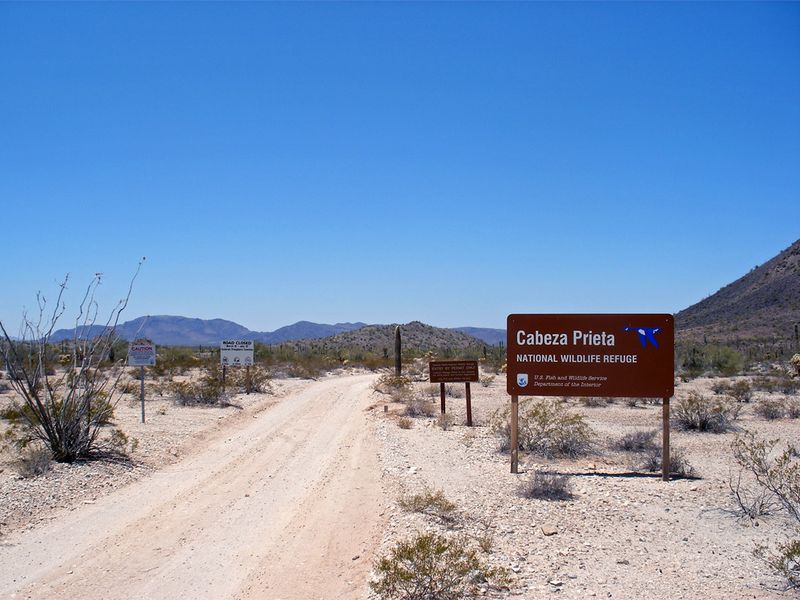
Remote and expansive, Cabeza Prieta National Wildlife Refuge is a place where silence dominates. Covering more than 860,000 acres along the Mexican border, it provides critical habitat for rare species like the Sonoran pronghorn.
Permits are required for entry, and most roads are unpaved, which means travelers should be self-sufficient and experienced in desert navigation. The landscape is a mosaic of volcanic peaks, sand dunes, and creosote flats.
Few facilities exist, and summer temperatures can be extreme. Those prepared for its challenges are rewarded with a sense of isolation and the possibility of spotting elusive wildlife amid the arid terrain.
7. Organ Pipe Cactus National Monument
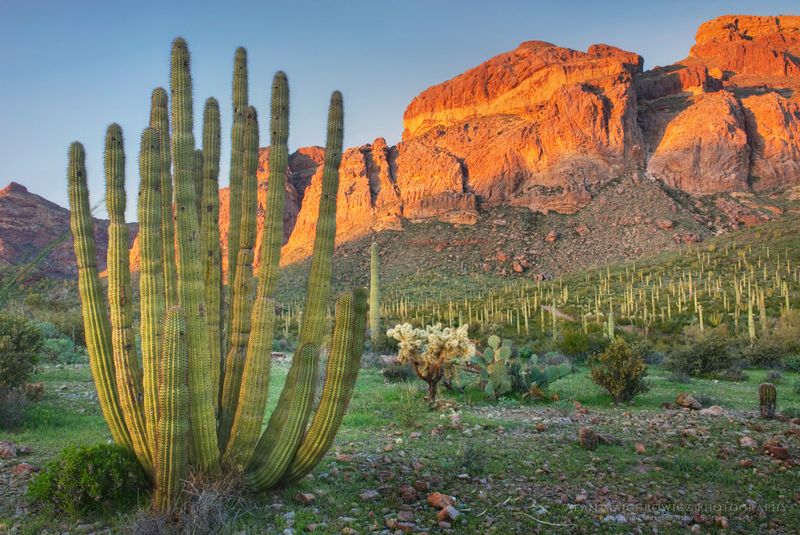
Organ Pipe Cactus National Monument stands out as the only place in the United States where dense stands of organ pipe cactus can be found. This UNESCO Biosphere Reserve borders Mexico in southwestern Arizona.
Scenic drives loop through valleys dotted with unique flora, while hiking trails offer close encounters with rare plant communities. The monument is less visited than other parks, opening quiet spaces for reflection.
Interpretive guides and ranger talks shed light on the natural and cultural context. Spring brings a burst of wildflowers, while cooler months are ideal for exploring the monument’s winding trails and viewpoints.
8. Vermilion Cliffs National Monument (Arizona Section)
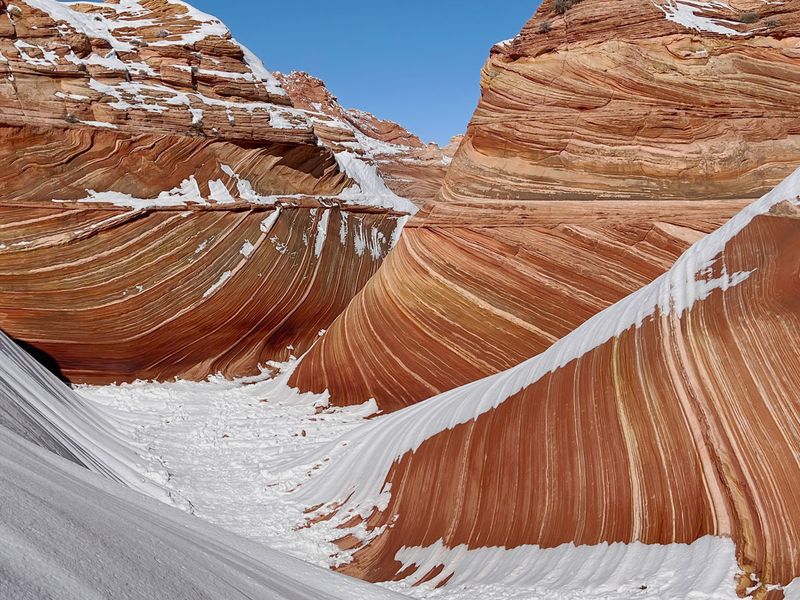
The Arizona section of Vermilion Cliffs National Monument draws curiosity with its swirling sandstone formations and bands of color. Sites such as The Wave and Coyote Buttes have gained global attention, but strict permit systems keep visitor numbers low.
Geology is the star here, with millions of years etched into visible layers. Advance planning is essential due to limited access and challenging terrain.
Hiking can be strenuous, requiring good navigation skills and preparation for changing weather. These protections help maintain the fragile landscape, allowing for quiet appreciation of natural artistry sculpted by erosion and time.
9. Castle Dome Mountains and Mine Museum
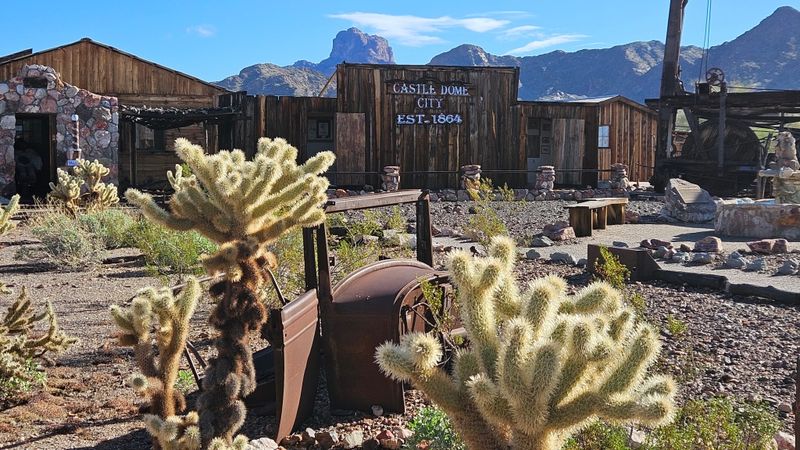
History enthusiasts find much to appreciate at Castle Dome Mountains and Mine Museum north of Yuma. The area blends rugged desert peaks with a meticulously preserved ghost town, reflecting southern Arizona’s mining era.
Wandering the site, visitors can enter original buildings, view mining artifacts, and learn about the boom days of silver extraction. Interpretive signs add color to the story of those who lived and worked here.
Surrounding trails lead into the mountains, providing contrasting views of natural and historical landscapes. The museum’s open-air exhibits offer a tangible link to the region’s economic and social past.
10. Tonto National Monument
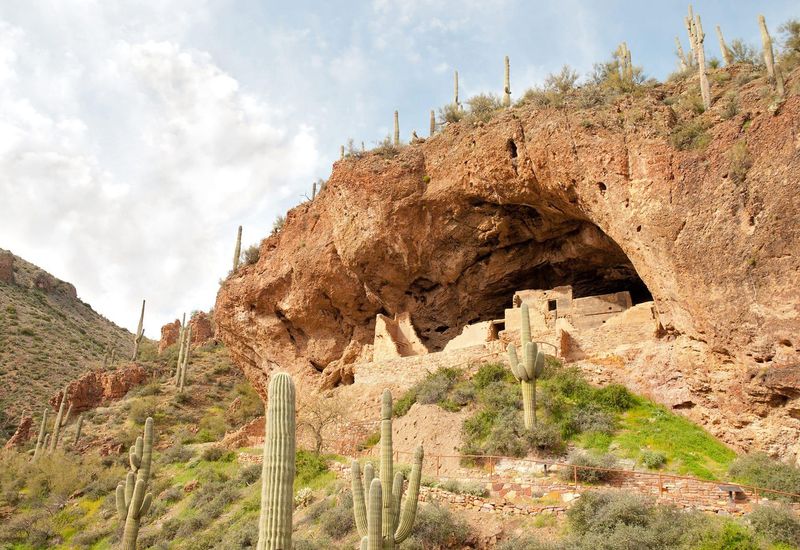
High above the desert floor, Tonto National Monument preserves the remains of Salado cliff dwellings. Built into steep hillsides east of Phoenix, these structures once sheltered a thriving community.
Visitors can access two main ruin sites via well-maintained trails, learning about Salado culture through interpretive displays and ranger programs. The combination of archaeological insight and desert scenery is distinctive.
The park’s small size encourages a slower pace, allowing time to appreciate both historic and natural features. Spring is particularly attractive, when wildflowers brighten the hills below the ancient homes.
Dear Reader: This page may contain affiliate links which may earn a commission if you click through and make a purchase. Our independent journalism is not influenced by any advertiser or commercial initiative unless it is clearly marked as sponsored content. As travel products change, please be sure to reconfirm all details and stay up to date with current events to ensure a safe and successful trip.